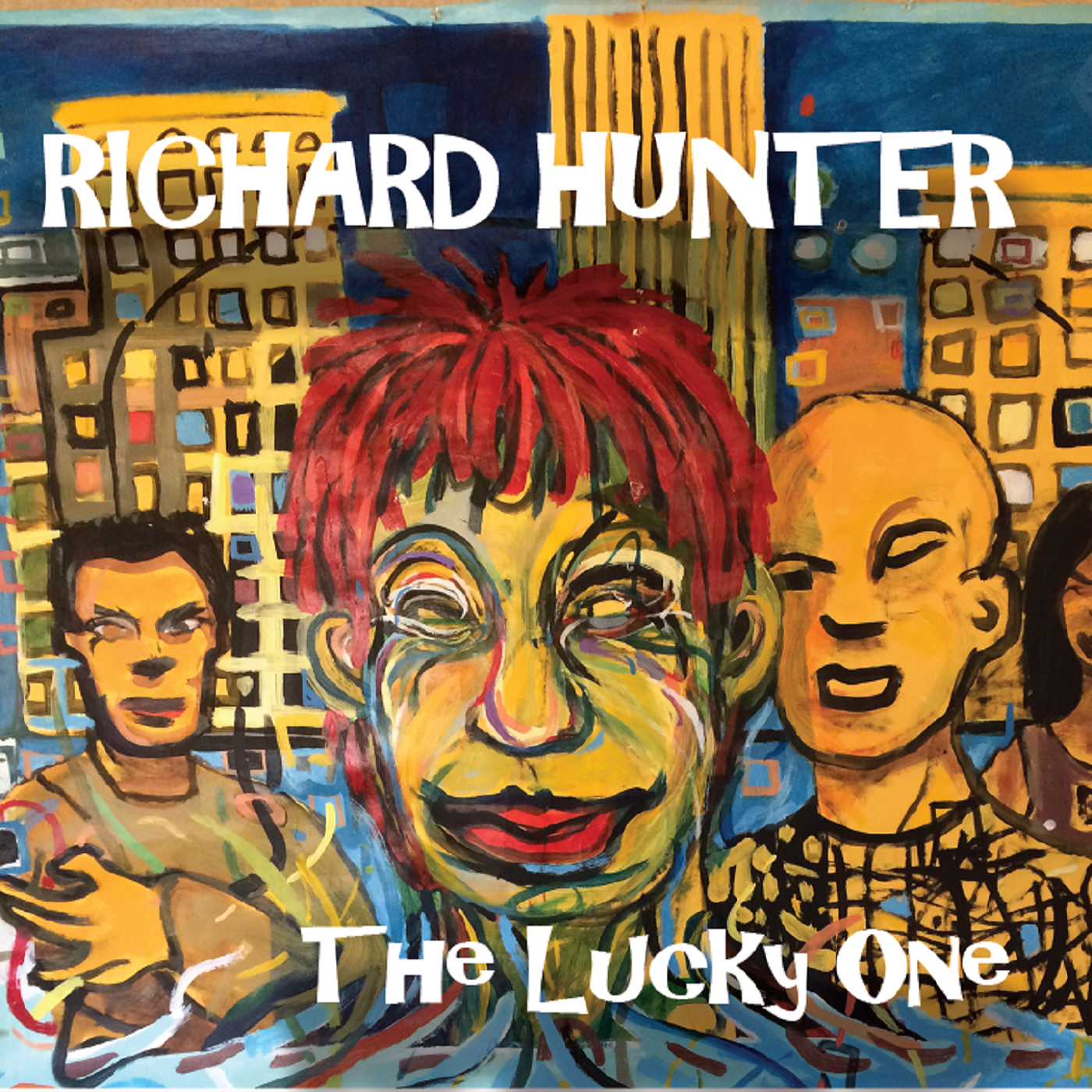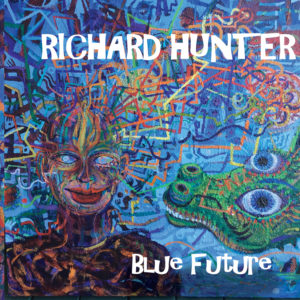
How I recorded the alien harmonica on my cover of Morphine’s “Early to Bed”
I love Morphine–the band, not the dope. I also loved Treat Her Right, Mark Sandman’s band prior to Morphine, with harmonica and vocal ace Jimmy Fitting (now performing with Session Americana in Boston) among others filling out the roster. Both bands featured unconventional instrumentation, Treat Her Right having a three-piece drum kit and no bass guitar, and Morphine winning the most-unusual-power-trio-of-all-time award with its lineup of baritone sax, two-string slide bass guitar, and drums. Much as I like Treat Her Right, it’s Morphine that made me think that if you could make rock and roll with a sax, bass, and drums, you could do it with practically anything, specifically including a bunch of effected-up harmonicas.
“Early to Bed,” from Morphine’s record “Like Swimming,” is a minimalist masterpiece: almost the entire song consists of one relentlessly driving single-note riff, repeated over and over with only two breaks in the pattern. The vocal is a hipster’s laconic warning to the unhip: partake of the nightlife or suffer the boring consequences. The performance is deadpan, hilarious, and driving. I’ve performed a solo version with a looper for years, and it was one of the first songs I proposed to producer Ed Abbiati for this record.
You can hear a clip of my version of “Early to Bed” using the player below–click on the right double arrow to advance the player to “Early to Bed,” which is the 4th song in the set. The player gives you 30 seconds of the song, which is the limit on CDBaby for a cover. If you want to hear the whole thing–which of course you should!–buy the track on CDBaby. You’ll be glad you did.
My performance has a different perspective from the original. Where Sandman is the knowing hipster, I’m the target of his comments–the guy with no night life. I’m warning the listener from the perspective of the poor slob who’s been there. I’m a little less cool, a little more quietly hysterical–and utterly psychotic on the harmonicas, which parts include at least three electric harp sounds that have never before been heard on any record.
I wanted to emphasize the cool minimalism of this song by focusing even more intensely on the single-note riff that drives the tune. The inclusion of lap steel, backup vocals, and whammy-pitch-shifted lead harmonica all add color to the low-rock esthetic of the original. I like the wah-wahed chorded harps, solo and behind the whammy parts, too–they’re so Prince. The end result is as hilarious and deadly serious as the original, with an original sound of its own.
Recording “Early to Bed”
Lap steel, bass, and drums for “Early to Bed” were recorded live in the studio with Mike Brenner, John Cunningham, and Mark Schreiber respectively on those instruments. I sang a scratch vocal and played a Seydel 1847 A harmonica in 2nd position (E)–the only harmonica used for all the parts on the song–through the Audix Fireball V into my Digitech RP500, running a patch that includes a Bassman amp model, an octave down pitch shift, an overdrive model, and a wah wah. That’s the harmonica part that includes the funky Prince-like chorded solo after the first verse, and similar parts elsewhere in the tune.
Harmonicas were overdubbed in my home studio. The first thing I overdubbed was a double-octave-down pitch-shifted patch with wah-wah, which doubles the bass guitar’s single-note riff, with occasional added sliding accents. The wah-wah is used to put a resonant edge on the sound and keep the overtones moving around, adding motion and interest to the sound. Then I overdubbed the same line using an octave-down patch with wah-wah, again working the pedal slowly to keep the sound evolving. Those two tracks add a kind of loud, nasty, crackly emphasis to the bass line, with the bass guitar handling most of the weight of the low end. (When I do the piece in a solo looped performance, those two harmonica sounds are the entire bass. It’s a different sound.)
The last things I overdubbed were the whammy-effected lead lines. The whammy effect is unique to Digitech gear. The whammy gives you a continuous pitch shift over a specified range, in this case an octave. The result is that you can bend pitches in ways that are absolutely impossible to produce otherwise, like a bend that goes down an octave before rebounding, or a series of rapid bends that have a shape but no identifiable key. Pitch becomes entirely relative when a whammy is in the picture. It’s weird and amazing.
I recorded one solo with the whammy in the studio with the band, and it was in my opinion a little weak. When I redid it, I recorded the first half of the solo using the octave down wah patch, playing a funky chorded solo, then switched to the whammy patch for the second half. When Chris Peet mixed it, he brought the pass recorded with the band live back into the picture, running it over the top of the funky chorded solo take. Then the second take on the whammy solo comes in with the voice of a towering alien, swooping and chattering faster and faster, and engaging in a weirdly melodic, atonal dialog with the original whammy track. What I love about this solo is that the pitches are absolutely all over the place, but you still hear the logic in the phrasing and overall shapes of the lines. Under the wild gyrations of that whammy pedal I was playing a real solo. Who knows what it was, man–I listen to it now and wonder how the hell I was working that pedal to make that crazy shit happen. (Short answer: slow, then fast, then slow, then really fast.) The same approach works well on the outtro, where both the wah wah and whammy harps go at it, illustrating vividly exactly what kind of nightlife you’re missing out on when you go to bed early. (The crazy kind that sounds like an alien duet. That’s the kind.)
The last things to go onto the track before it was mixed were the sly, funny backup vocals by No Good Sisters Meaghan Kyle and Jess McDowell. Lotta wit in those vocals. The “can you dig it” vocal interplay after the first verse was started by me in my home studio before the track was sent to the Sisters for vocals; they improvised the call and response. Funny stuff.
Performing “Early to Bed”: two harps at least
You need at least two harps on this tune. The most important sounds are the octave-down wah wah and the whammy, which play simultaneously at numerous points in the tune. The person playing the whammy setup could start the piece with the low double octave patch in play, establishing the deep, grinding tone up front and going to the solo sound of the whammy later. It it were absolutely necessary to do this with one harp, I’d say stick with the octave-down wah sound through the first half of the solo (so you could do the waka-waka Prince chorded solo), then switch to the whammy setup, then back to the octave-down wah to close it out.
However you approach this tune in performance, “Early to Bed” is a stunning example of just how little you need to play in order to put the room in motion. Morphine did other versions of this tune, some of them much more complex in terms of the harmonic structure behind the vocal, but I love this one most of all.
If you liked that, you’ll like these:
the 21st century blues harmonica manifesto in sound
Get it on Amazon
Get it on iTunes
the rock harmonica masterpiece
Get it on Amazon
Get it on iTunes
Tags In
Related Posts
2 Comments
Leave a Reply
You must be logged in to post a comment.
WHAT’S NEW
Categories
- Audio/Video
- Blog
- Blue Future
- Digitech RP Tricks and Tips
- Discography, CDs, Projects, Info, Notes
- Featured Video
- For the Beginner
- Gallery
- Hunter's Effects
- Hunter's Music
- Huntersounds for Fender Mustang
- Meet the Pros
- More Video
- MPH: Maw/Preston/Hunter
- My Three Big Contributions
- Player's Resources
- Pro Tips & Techniques
- Recommended Artists & Recordings
- Recommended Gear
- Recorded Performances
- Reviews, Interviews, Testimonials
- The Lucky One
- Uncategorized
- Upcoming Performances
- Zoom G3 Tips and Tricks



Patch numbers and/or names please!
This is one of the coolest songs on the album and I’d love to experiment with these sounds.
Great stuff (as always)!!
TC
@Tommy: did I already reply to this? Anyway, on “Early to Bed,” I used a few patches:
1) An octave-down patch with wah; that’s the one that does the chorded rhythm solos. I think it’s called “ERLYBH” (for Early bass-high) in the “Lucky One” set I distributed to RP500 licensees
2) a double octave down patch with wah that doubles the bassline. ERLYBL (for Early bass-low)
3) The whammy patch that I used for the alien solo. That’s called ERLYW8U (for Early Whammy 8 up) in the Lucky One patchset.
Hope this is useful, thanks, RH